The Gift of South Dakota
Subscriptions to South Dakota Magazine make great gifts!
Subscribe today — 1 year (6 issues) is just $29!
The Victim’s Daughter
Musty smelling and crumbling, Black Hills newspapers of April 1917 report names that confirm their age. President Woodrow Wilson calls for an all-out American effort to win the World War. Former President Teddy Roosevelt suggests sending gung-ho, mature veterans into combat. Closer to home Robert Tallent, credited by the papers as “the first white boy in the Black Hills,” dies.
Only a few Black Hills residents knew the names Martin Conheeney and Eimel Joukkuri before April 25, 1917—the date the Lead Daily Call reported a deadly encounter between the two. The night before at about 9:30, just inside the Terraville tunnel, Joukkuri shot Conheeney. Then he walked to a police station at Mill and Main in Lead, turned himself in, and was placed under arrest.
The tunnel, long gone, once ran nearly a mile through a mountain ridge and connected Lead and Terraville. It was Homestake Gold Mine property and pedestrians regularly used it. But the mine built the tunnel so a train — a little air powered tram — could haul ore into Lead. If a pedestrian met the train in the tunnel, says Lead historian Wayne Paananen, he would have to back against the wall and watch the engine and ore cars pass within a foot. So guards were instructed to keep people out of the tunnel when the train was due, especially if they appeared intoxicated.
Joukkuri was one of those Homestake guards and Conheeney an off-duty Homestake explosives expert.
“Shortly after his arrest and before being advised to remain silent regarding the circumstances of the killing,” reported the Call, “Joukkuri made a statement to Chief of Police Keffler, in which he said that immediately before the trouble, he was on duty in the entrance of the tunnel and probably 60 feet away from the roundhouse where the concrete work of the tunnel begins, when Conheeney came through from the Lead end of the tramway, on his way into the tunnel. Conheeney was under the influence of liquor…”
Conheeney’s family and friends would later fight the notion that he was drunk. But in the hours after the shooting, Joukkuri’s statement looked like a fact in the Lead Daily Call.
Joukkuri said he told Conheeney to stop, the Call continued. Conheeney “paid no attention to Joukkuri’s admonition, but proceeded on his way, and the guard followed him. They exchanged blows and grappled, both going to the ground. Joukkuri stated that Conheeney had the better of him in the encounter, and attempted to choke him; that they got to their feet and Conheeney struck him with a bottle of liquor which he carried, landing a blow on the side of the guard’s head.”
In Joukkuri’s trial it would emerge that the liquor was for Conheeney’s wife, Mary, intended for medicinal use.
Joukkuri told police he ran for help after the struggle. George Hart, watchman and boiler engineer, added that Joukkuri bolted into his boiler room off the tunnel with a bloodied head and torn clothing. Hart couldn’t make out what Joukkuri told him, he explained, because working close to Homestake’s stamp mill left him a bit deaf. But Joukkuri’s condition certainly communicated trouble. Hart and Joukkuri stepped into the tunnel, Hart going first, and they spotted Conheeney. Hart said Conheeney threw a rock their direction, then charged toward Joukkuri. Hart claimed he tried grabbing Conheeney but missed.
Joukkuri, revolver in hand, fired two shots. One, Lead police determined, missed. The other hit Conheeney in the left temple and he fell against the tunnel wall and into a sitting position, dead.
The newspaper reported all this in great detail within hours, but there was more that the public didn’t learn for a while. Conheeney was 33, married with a young son and daughter, and had another baby on the way. At Joukkuri’s trial it was established that Conheeney was taking liquor to his wife, and witnesses from the Lead saloon where he bought the spirits said he left sober. Joukkuri’s shooting of an unarmed man didn’t sit well with the jury. It convicted the guard of manslaughter and sentenced him to hard labor at the state penitentiary.
Court records and press reports referred to Joukkuri as Finnish and Conheeney as Irish (both, in fact, were immigrants) and there’s been speculation that the references implied ethnic tension between those groups. But historian Paananen says identifying residents in remarkably cosmopolitan Lead by nationality was common practice during those years, even in Homestake employee records, and in this case probably implied nothing. It’s worth noting the family that first came to Conheeney’s widow’s aid that tragic night was Finnish (the Macki family).
Jim Dunn, former Homestake employee and state legislator, has taken interest in the case for reasons revealed later in this article. He thinks the tragedy resulted simply because of “an overzealous guard and a man who stubbornly insisted he was going home as quickly as possible to his sick wife.”
The widow, Mary Conheeney, took her three children (including a daughter her husband never met) home to Ireland in 1919. She had to wait for the war’s end before it was safe to cross Atlantic waters. Her middle child, Nora, was six in 1919 and would recall a rough crossing and terrible seasickness.
Seventy-five years passed. The tram system for hauling ore through the mountain ceased operation and pedestrians had the Terraville tunnel all to themselves for several years. Eventually sections of the tunnel were filled in, or lost to the expanding Homestake open cut mine. The open cut wiped away Terraville, too.
Then in 1994 Deadwood Mayor Bruce Oberlander received a strange letter. It came addressed to the “Lord Mayor, Deadwood City,” definitely a first. It bore an Athlone, Ireland postmark, and asked about “Lead City.” The letter-writer’s last name, written in pen, was hard to make out. It appeared perhaps to be Ryan. The first name, though, was unmistakable: Nora.
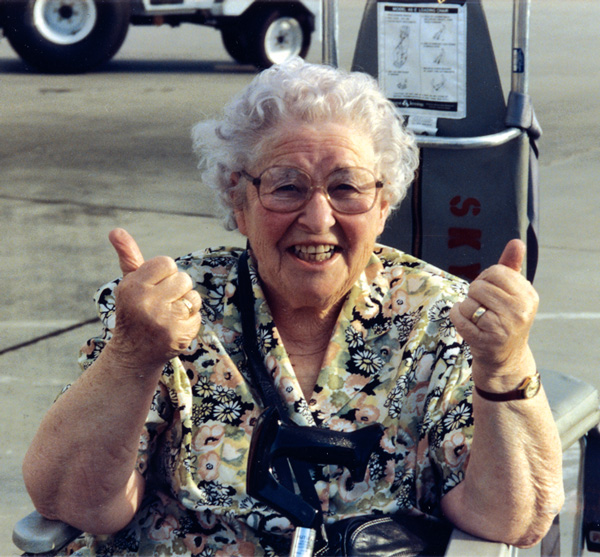 |
| Nora Conheeney Ryan was in good spirits when she returned to the Black Hills, 77 years after her father's murder. |
That’s where Jim Dunn and his wife, Betty, entered the story. The mayor’s wife, Mary Ann, knew the Dunns had traveled in Ireland. Perhaps, she thought, they’d know Athlone’s location. As it turned out Jim and Betty had stayed in an Athlone bed and breakfast and knew the owner. In a plot development that would be laughed out of any fiction piece, the Dunns called their Athlone friend. She told them Nora Ryan lived less than a mile up the road. This was Nora Conheeney Ryan, Martin and Mary’s middle child. At age 81 she had decided it was time to return to the Black Hills, and maybe arrange for a new headstone for her father’s grave.
The Dunns promised to help any way they could. It was, says Betty, the beginning of a friendship that would shortly feel like a family relationship — and would continue feeling that way over the years. On Aug. 22, 1994, Nora landed at Rapid City Regional Airport and raised her hands in triumph. Two daughters, a son-in-law, and a friend from California accompanied her.
“I shall never forget my trip to South Dakota,” Nora later wrote. “It was the most challenging and wonderful thing I ever did. With Jim’s help, finding my father’s grave was the greatest moment of my life.”
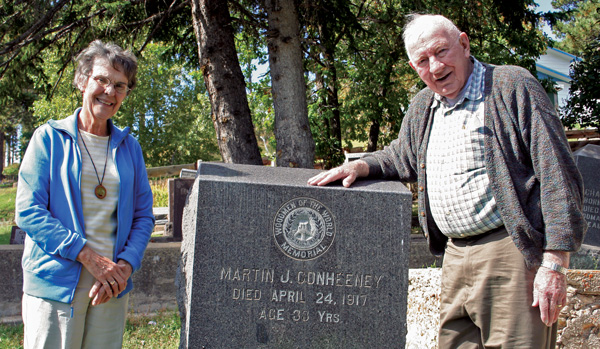 |
| Former state legislator Jim Dunn (pictured with his wife, Betty, at Martin Conheeney's grave) believes the tragedy resulted from "an overzealous guard and a man who stubbornly insisted he was going home to his sick wife." |
They found it in South Lead Cemetery. Nora didn’t have to arrange for a headstone. The original stood in beautiful condition.
That wasn’t all Nora found. The Dunns made phone calls and the past 75 years melted away. Hubert McGrath stopped by with a photo of his parents, John and Margaret McGrath, who were Nora’s godparents when she was baptized at Lead’s St. Patrick Catholic Church. Nora recognized the faces in the photo immediately. She brought some pictures of her own, including that of a house between Deadwood and Spearfish. It once belonged to her father’s cousin and Nora recalled spending pleasant summer days there. Jim called Spearfish historian Linfred Schuttler, who in turn pulled Jim Riggs into the search. “Jim knew right away where the house was, north and east of the Spearfish airport,” Linfred recalls. “It had been a stagecoach stop on the old Spearfish to Whitewood line.” Nora visited the home and recognized it right away as she approached—right down to the trees in the yard.
“She sure had a memory,” Betty Dunn says. “What do I remember from when I was four years old? She remembered everything — sights, smells, sounds.”
And tastes. Betty was able to fulfill a menu request that Nora associated with her Black Hills childhood: corn on the cob and watermelon.
Joukkuri’s trial records surfaced easily. The Lawrence County courthouse had just been refurbished and the city of Deadwood took possession of its historical documents. The records held a surprise. Joukkuri appealed his manslaughter conviction, claiming self-defense, and won.
“He walked away from that sentence,” says Jim Dunn. “Nora didn’t know that and it was the only sour note on her whole trip, finding out he’d been released. But she wasn’t bitter. She said, ‘What is done is done.’”
Of course, just as Black Hills life moved along with twists and turns for 75 years, so did Nora’s life across the sea. Her mother actually planned to return and raise her children in South Dakota after the 1919 trip home. But Mary Conheeney ended up staying in Ireland where she was embraced by a loving, supportive extended family. Nora became a teacher, married fellow teacher Martin Ryan, and raised a family of six. Late in life, after her husband’s death, Nora hoped to see the Black Hills again. She no longer knew anyone there, however. Deeply religious, she told God the trip would be possible only if he designated South Dakota friends and guides. That’s what happened, and she later reflected that the trip helped her understand a sadness she carried her entire life.
Nora returned to Ireland after a week, lived another 12 years, and took special delight in Jim and Betty’s visits to Athlone. From afar she kept an eye on the Black Hills. “Everyone appreciates an honest man,” she observed when Jim won another term in the state senate. In 2001, after the mine that employed her father closed, she wrote, “Farewell Homestake — it gave us lots of headaches.” Read into that what you will, but she probably referred to the same pounding stamp mill noise that hurt George Hart’s hearing.
What most impressed Nora’s South Dakota friends was that she didn’t want to forget the Black Hills after the family tragedy, but hoped to embrace her childhood home. And it wasn’t just a gravestone, house, and corn-on-the-cob she sought, but people.
“She could imagine making those kinds of connections in Ireland, but not in the United States, because America is so very vast,” says Tina Burke, one of Nora’s daughters who flew with her to South Dakota. “When she first thought about the trip, she believed it was unlikely she could even find the grave.”
Adds Jim Dunn, “There are very few strong ties these days, even among families. People are always moving around, cutting ties. Who could ever have guessed that looking for that grave would result in the close tie we have with Nora’s family?”
It’s an ending to the tragedy that reporters couldn’t have imagined as they studied grim police and coroner reports in 1917.
Editor’s Note: This story is revised from the November/December 2008 issue of South Dakota Magazine. To order a copy or to subscribe, call (800) 456-5117.


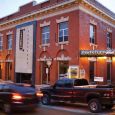

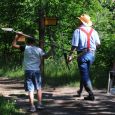

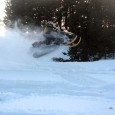
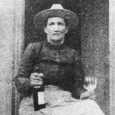


Comments
Very wonderful couple and dear friends
I would be interested to connect with you, would you like to speak sometime? I’m a bit of a technophobe so not sure how this could work, uncomfortable sharing my email address so publicly, can you think of a way, perhaps if I email the magazine? With thanks